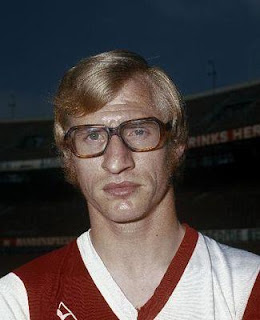
The 1958 tournament saw the arrival of Pele, and also a significant development in the birth of the modern game...
In the early 1950’s the Hungarians under Cebes had made tactical advances, subtly changing the traditional W-M formation thus allowing a more fluid approach to play. Hungarian coaches such as Bela Guttman and Dori Kurschner influenced the development of this system in Brazil. This gave rise to a new formation. During one of his spells as the Brazilian national coach Flavio Costa published an article in the newspaper
O Cruzeiro introducing the "diagonal system". Modern football, according to Costa, "has lost its improvisation", and he made it his motto that a team should "defend well so that they can attack even better."
In the diagonal, the central square of the W-M became a rhombus, with one of the wing-halves slightly deeper than the other, and one of the inside-forwards slightly advanced, Costa thus began the evolution to 4-2-4, the first ‘numbered’ system. The defensive half-back eventually became a second centre-back, and the advanced inside-forward a second striker.
Six men defended, six, or even seven would attack.Now in 1958 Brazil, under Vicente Feola played 4-2-4: Four defenders, two midfield runners and four forwards. This first appearance of a 'back four' meant that defence became more robust and cohesive, with defenders also having an attacking role.
There was more fluidity , with emphasis being on short passing and thrusting runs.
Players had to cover more ground. The game became faster and Comfort on the ball and greater technical skills were required in all positions.
The First round game between Brazil and England saw the first goalless game in World Cup finals history.
England went out in first round but were represented in the final in the

person of Sweden’s manager George Raynor, a Yorkshireman with a curious managerial career that took him from Iraq to Doncaster Rovers via Juventus and two world cup campaigns with Sweden.
Just Fontaine of France set a record that is unlikely to be beaten, scoring 13 goals in the tournament.
Pele, of course, arrived- the 17 year old got a deflected winner in the 66th minute of the quarter final with Wales, and then banged in a hat trick in the semi final against France. He netted twice in the final.
Waldyr Pereira, aka Didi was the player of the tournament and Garrincha’s mesmerising dribbling was on show- allegedly he didn’t realize that the game against Sweden was the final, thinking that it was some sort of round robin format.


Vicente Feola -4-2-4






 person of Sweden’s manager George Raynor, a Yorkshireman with a curious managerial career that took him from Iraq to Doncaster Rovers via Juventus and two world cup campaigns with Sweden.
person of Sweden’s manager George Raynor, a Yorkshireman with a curious managerial career that took him from Iraq to Doncaster Rovers via Juventus and two world cup campaigns with Sweden.



.jpg)

























